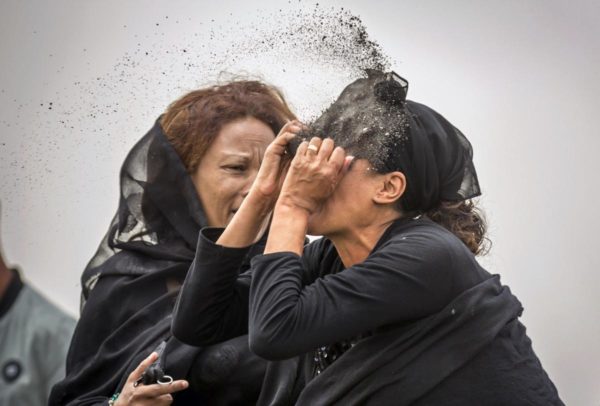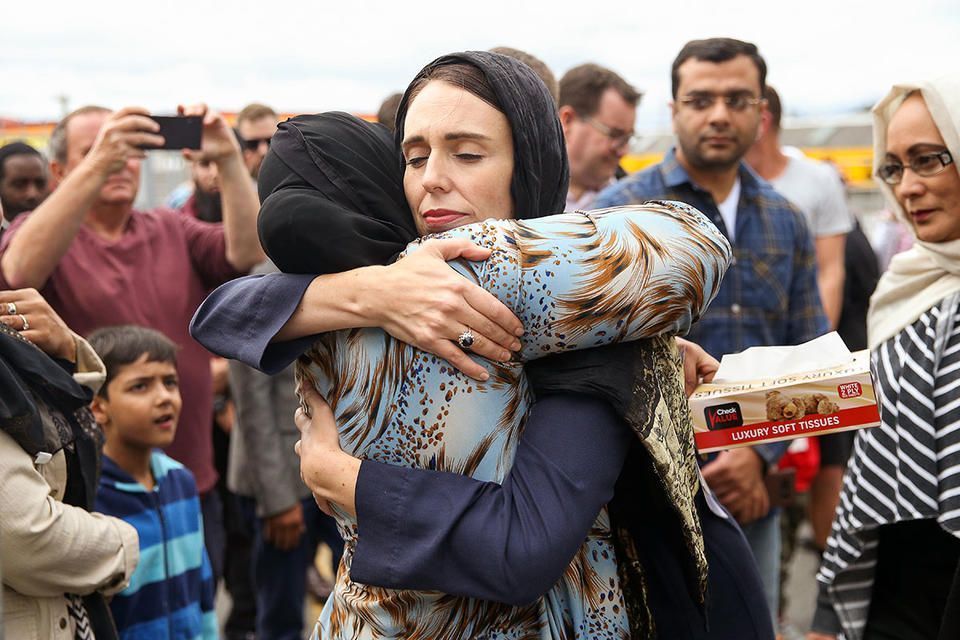Notes
The Grieving Woman at the Ethiopian Airlines Crash Site, and the Western Gaze

This astonishing photo from the Ethiopian Airlines crash site hits me two ways. The expression of grief is so intense, I cannot forget it, all the way down to the tension in this woman’s cheek, jaw, and neck, and the dirt that misses her face and seems permanently suspended. At the same, however, I feel challenged looking at the photo as a westerner.
Knowing very little about Ethiopia, and about grief and mourning there, how can I make sense of a woman rubbing dirt into her face? Immediately, I want to know if this is a ritual, or an individual and spontaneous act.
The AP caption is helpful in a sense:
An Ethiopian relative of a crash victim throws dirt in her own face after realising that there is nothing physical left of her loved one….
In parcel with the grief, the reaction has to do with missing a body to mourn. Whether she is Muslim or Christian Orthodox or Jewish, each one of those religions places ultimate importance on sacred burial rituals required to be performed in the immediate hours or days.
The phrase “throws dirt in her own face” also leaves me cold, and clueless. Again, is this purposeful? I try to tell from the second woman, but there is no sense of protecting her companion from herself. So, what is an appropriate way to look at this? And, how can I avoid seeing it as a sensational, foreign spectacle?
One thing to appreciate is that, in rural Ethiopia and other parts of the non-western world, mourners typically wail and gesture intensely, even violently, giving themselves fully to the emotional rupture. It is not uncommon for people to scratch and rip at themselves, tear out their hair, throw themselves down or faint, even try to harm themselves in some way.
If that is already alien and confusing for Westerners, what makes the photo more ambiguous are the woman’s gripped hands and their location. If you block out the dirt (you can do it by holding your own hand just above her fingers), it looks like someone succumbing to her pain and retreating into her mind—as opposed to joining the pain and assaulting herself. My fear is that Westerners will look at her and unconsciously separate the face and the hand gesture from the dirt, because most of us in the west who grieve don’t get “that dirty.”
The AP story that followed makes it completely clear, however, that the dirt means everything—and in a fateful way, lends more poignancy to its permanent suspension:
In Ethiopia, officials have begun delivering bags of earth to family members of the 157 victims of the crash instead of the remains of their loved ones because the identification process is going to take such a long time. Family members are being give a 1 kilogram (2.2 pound) sack of scorched earth taken from the crash sites, said two family members. An Ethiopian government official confirmed this.
As much as the description of the dirt in the caption feels harsh and undermines the complexity and awe of the physical act, its description in the follow up article—whether a random phrase or not— seems completely fitting.
“Scorched earth” is powerful when you consider how much the emotional loss is compounded by the physical erasure. That earth is scorched in a way that all the bodies are contained in every grain. But it is scorched even more in the sense that this earth is devoid of what and who this woman lost. That is a violence we can all understand.
— Michael Shaw
(Photo: Mulugeta Ayene/AP. Caption: An Ethiopian relative of a crash victim throws dirt in her own face after realising that there is nothing physical left of her loved one, as she mourns at the scene where the Ethiopian Airlines Boeing 737 Max 8 crashed shortly after takeoff on Sunday killing all 157 on board, near Bishoftu, south-east of Addis Ababa, in Ethiopia Thursday, March 14, 2019. About 200 family members of people who died on the crashed jet stormed out of a briefing with Ethiopian Airlines officials in Addis Ababa on Thursday, complaining that the airline has not given them adequate information.”)


Reactions
Comments Powered by Disqus